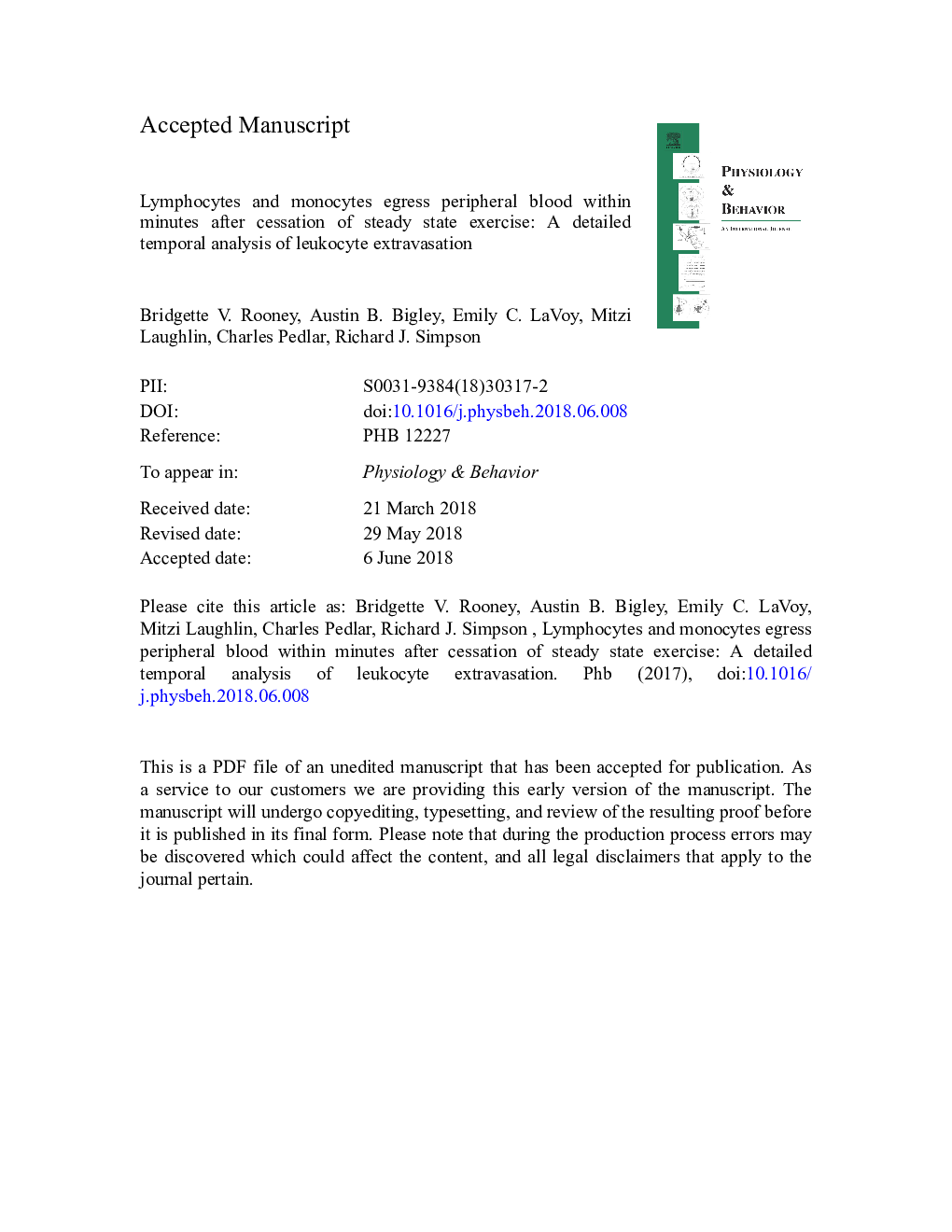| کد مقاله | کد نشریه | سال انتشار | مقاله انگلیسی | نسخه تمام متن |
|---|---|---|---|---|
| 8650278 | 1571124 | 2018 | 24 صفحه PDF | دانلود رایگان |
عنوان انگلیسی مقاله ISI
Lymphocytes and monocytes egress peripheral blood within minutes after cessation of steady state exercise: A detailed temporal analysis of leukocyte extravasation
ترجمه فارسی عنوان
لنفوسیتها و مونوسیتها خونریزی محیطی را در عرض چند دقیقه پس از پایان تمرین حالت پایدار انجام میدهند: یک تجزیه و تحلیل دقیق زمانبندی بروز لکوسسیت
دانلود مقاله + سفارش ترجمه
دانلود مقاله ISI انگلیسی
رایگان برای ایرانیان
کلمات کلیدی
موضوعات مرتبط
علوم زیستی و بیوفناوری
بیوشیمی، ژنتیک و زیست شناسی مولکولی
فیزیولوژی
چکیده انگلیسی
Acute exercise evokes an almost instantaneous lymphocytosis, followed by sustained lymphopenia that occurs within just 30-60â¯min after exercise cessation. The aim of this study was to characterize the immediate (order of minutes) post-exercise kinetics of lymphocyte and monocyte egress, and to determine whether this egress is associated with heart rate recovery following a single bout of steady state dynamic exercise. Eleven healthy subjects cycled for 30-min at ~70% of their estimated peak power. Blood samples were collected from an intravenous catheter before exercise, during exercise (E) at +15 and +30â¯min, and during passive recovery (R) at exactly +1, +2, +3, +4, +5 and +10â¯min after exercise cessation. Complete blood counts and flow cytometry were used to enumerate total monocytes, lymphocytes: CD3+ T-cells, CD4+ T-cells, CD8+ T-cells, NK-cells and γδ T-cells in whole blood. Both lymphocytes and monocytes displayed rapid egress kinetics, by R+3 the total numbers of all cell types examined were significantly lower than E+30. NK-cells egressed more rapidly than other lymphocyte subtypes, followed by CD8+, γδ, and then CD4+ T-cells. Further, the egress of NK-cells, CD4+, and CD8+ T-cells positively correlated with heart rate recovery after exercise cessation. In conclusion, lymphocyte and monocyte egress is rapid and occurs within minutes of exercise recovery, underscoring both the importance of collection time for post exercise blood samples, and the use of intravenous catheters to capture peak cell mobilization. The rate of egress may be dependent on how quickly hemodynamic equilibrium is restored on cessation of exercise and is, therefore, likely to be influenced by individual fitness levels.
ناشر
Database: Elsevier - ScienceDirect (ساینس دایرکت)
Journal: Physiology & Behavior - Volume 194, 1 October 2018, Pages 260-267
Journal: Physiology & Behavior - Volume 194, 1 October 2018, Pages 260-267
نویسندگان
Bridgette V. Rooney, Austin B. Bigley, Emily C. LaVoy, Mitzi Laughlin, Charles Pedlar, Richard J. Simpson,
